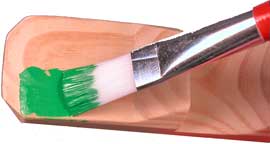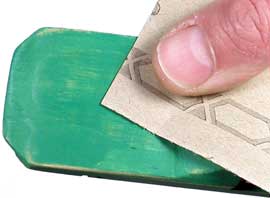You are using an out of date browser. It may not display this or other websites correctly.
You should upgrade or use an alternative browser.
You should upgrade or use an alternative browser.
Laser TV to topple plasma and LCD
- Thread starter K.I.L.E.R
- Start date
Interesting. Never heard of this technology before. Anyhow something in the article left me a bit perplexed.
Laser TV, available in Australia in 2007, boasts double the clarity of its predecessors for less money.
Maybe it's got a time travel feature?Australia should see its first Laser TVs in 2008.
sumdumyunguy
Newcomer
So are they hinting at "DEEP COLOR" with this:
I was all set to get meself my second Sony HDTV (a 60" SXRD to go along with the 42" triple LCD direct view I have now) but as Ty noted above, I may have to wait a bit.
LCD and plasmas can produce about half the colour gamut, which is the amount of colour which can be viewed by the human eye, whereas Laser TV can produce up to 90 per cent
I was all set to get meself my second Sony HDTV (a 60" SXRD to go along with the 42" triple LCD direct view I have now) but as Ty noted above, I may have to wait a bit.
On a different forum, I made a post about this new Laser Light DLP set from Mitsubishi. I posted a lot of different information about it and the comparison to Plasma.
http://www.neogaf.com/forum/showthread.php?t=112962&highlight=mitsubishi
http://www.neogaf.com/forum/showthread.php?t=112962&highlight=mitsubishi
Zew Zew Zew!
Hm... that puts it just a little more than half-way between Sol and Proxima Centauri at this time.
Australia should see its first Laser TVs in 2008.
Hm... that puts it just a little more than half-way between Sol and Proxima Centauri at this time.
Last edited by a moderator:
I wouldn't hold off buying a HD set just because there's an announcement of some new revolutionary tech "just around the corner".
Wasn't the SED displays by Canon supposed to revolutionize the display market with more affordable big flat displays, but still there's no firm date or price of any set.
The Laser TV tech being in such an early state, I'll be very very surprised if they have the tech ready enough for massmarket next year, even if they had the tech, it'll take time to set up the plants to manufacture them at any large quantities, and also to get the marketing of the product ready.
If Laser TV really is to become a massmarket product next year, surely we'd have seen a working prototype unit displayed in some of the exhibitions like CEDIA and such.
Wasn't the SED displays by Canon supposed to revolutionize the display market with more affordable big flat displays, but still there's no firm date or price of any set.
The Laser TV tech being in such an early state, I'll be very very surprised if they have the tech ready enough for massmarket next year, even if they had the tech, it'll take time to set up the plants to manufacture them at any large quantities, and also to get the marketing of the product ready.
If Laser TV really is to become a massmarket product next year, surely we'd have seen a working prototype unit displayed in some of the exhibitions like CEDIA and such.
There's not a lot of information there nor on their home pages but, if you look in the prospectus, (linked from http://www.lightbit.com/) and go through to section 9, they have a list of their patents and some sound quite intriguing.
Reading about this, i keep seeing the comment that the colour is so vivid that "it looks like wet paint"...
Is that actually a good thing?? I mean wet paint is all... wet...? I don't get it.
Are "wet paint" colours more vivid than real colours? Isn't the point of these TVs, trying to reproduce real colour anyway? Who cares about wet paint!
Is that actually a good thing?? I mean wet paint is all... wet...? I don't get it.
Are "wet paint" colours more vivid than real colours? Isn't the point of these TVs, trying to reproduce real colour anyway? Who cares about wet paint!
This is really targetting RPTV. It's a case of replacing a bulb with a laser. SED is the natural competitor to PDP/LCD.
Edit: Shouldn't this be in PC Video & HTPC?
AFAIK, Canon's had problems with the printing process, so low manufacturing cost is no longer in it's favour. With falling PDP/LCD prices, Toshiba is in a price squeeze & has delayed availability until at least Q407.Wasn't the SED displays by Canon supposed to revolutionize the display market with more affordable big flat displays, but still there's no firm date or price of any set.
Edit: Shouldn't this be in PC Video & HTPC?
Last edited by a moderator:
Reading about this, i keep seeing the comment that the colour is so vivid that "it looks like wet paint"...
Is that actually a good thing?? I mean wet paint is all... wet...? I don't get it.
Are "wet paint" colours more vivid than real colours? Isn't the point of these TVs, trying to reproduce real colour anyway? Who cares about wet paint!
Maybe they were watching that crazy painter guy on PBS.
Nite_Hawk
WhiningKhan
Regular
So now we can really experience the true meaning of "as exciting as watching wet paint drying".
Are "wet paint" colours more vivid than real colours?
Wet paint tends to be significantly more vivid than dry paint.
For example:
Wet:

Dry

But I still think the analogy is nuts.
aside from what Marco noted, this articles has more dubious bits than it provides useful informaton.
for starters, since when is the color fidelity of plasma and LCD equated? last time i checked (i.e. yesterday) LCD panels were still topping at 'true 8bit!', while PDPs have been in the low teens bitness for some time now.
for starters, since when is the color fidelity of plasma and LCD equated? last time i checked (i.e. yesterday) LCD panels were still topping at 'true 8bit!', while PDPs have been in the low teens bitness for some time now.
The color of light produced by a laser is, by definition, spectrally narrow, varying less than one nanometer on either side of the peak wavelength. The filters used for lamp-based projection systems aren't as spectrally pure, varying as much as 20 nanometers, he says. Our eyes can detect this difference, and when the colors are more spectrally pure, they appear more vivid
http://www.technologyreview.com/read_article.aspx?id=17651&ch=infotech
Wet paint tends to be significantly more vivid than dry paint.
For example:
Wet:

Dry

But I still think the analogy is nuts.
Exactly my point. Wet paint on the TV will look like true wet paint i guess, but i wouldn't want dry paint in movies (or anything dry!) to look like wet paint... Silly analogy.
Similar threads
- Replies
- 7
- Views
- 737
- Replies
- 311
- Views
- 27K
- Replies
- 65
- Views
- 25K
- Replies
- 95
- Views
- 13K

